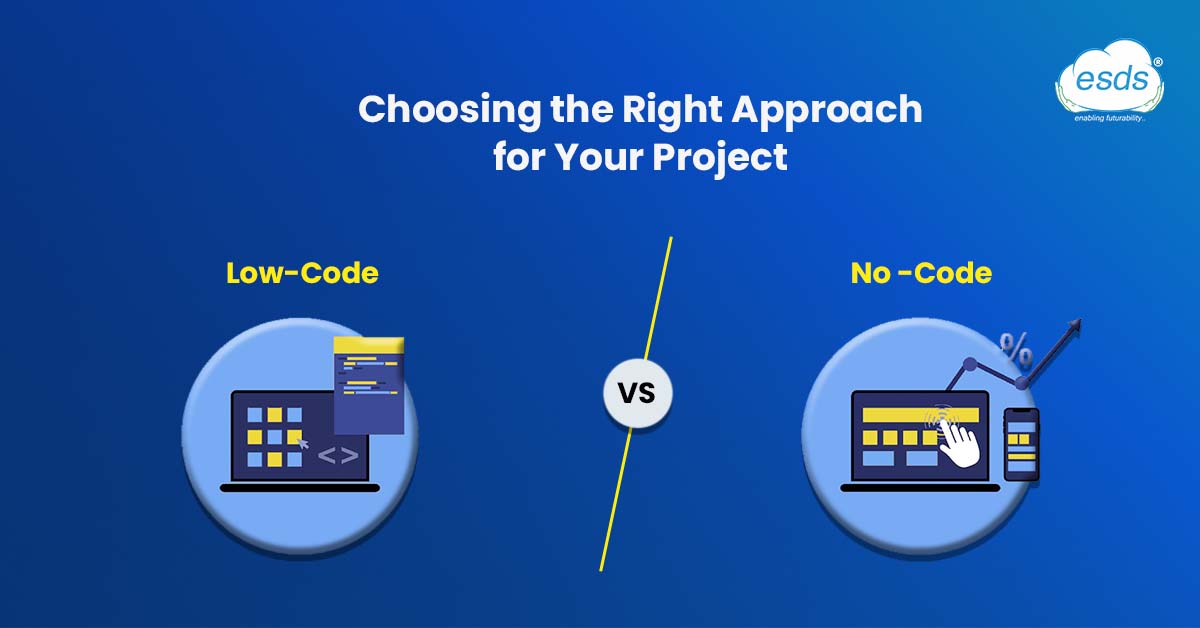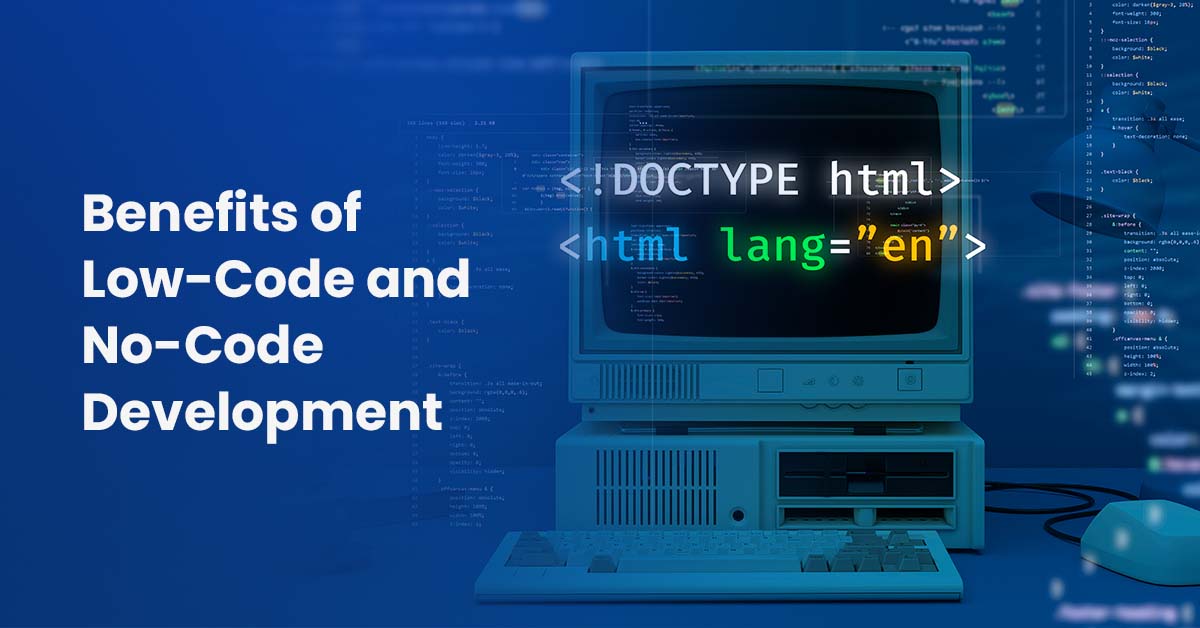Low-Code vs. No-Code: Choosing the Right Approach for Your Project

Before getting into the details about Low-code and No-code, here is a start you should know.
“70% of new business applications will use low-code/no-code technologies by 2025.”
In today’s rapidly evolving digital landscape, businesses and individuals seek efficient ways to develop software solutions and applications without extensive coding knowledge. Two popular approaches that have gained significant traction in recent years are low-code and no-code development. These innovative methodologies offer a streamlined path to application creation, empowering users to build functional software solutions with minimal coding efforts. This article will explore the differences between low-code and no-code development, their benefits, and how to choose the right approach for your Project.
Understanding Low-Code and No-Code Development

Low-Code Development
Low-code development refers to a visual development approach that allows users to create software applications using a graphical user interface (GUI) and pre-built components. With low-code platforms, developers can quickly design and build applications by leveraging drag-and-drop functionality, ready-made templates, and pre-configured modules. This approach significantly reduces the amount of traditional hand coding required, enabling faster application development and deployment.
One of the key advantages of low-code development is its accessibility to a wide range of users, including those with limited coding experience. By abstracting complex programming tasks, low-code platforms empower developers to participate actively in application development.
No-Code Development
No-code development takes the concept of low-code a step further by eliminating the need for coding or programming knowledge. Users can create fully functional applications using intuitive visual interfaces and predefined modules with no-code platforms. These platforms often utilize a graphical flowchart-like interface, enabling users to design application logic by connecting different components and actions.
No-code development provides a user-friendly environment that empowers individuals without technical backgrounds to bring their ideas to life. No-code platforms democratize application development and foster organizational innovation by removing the coding barrier. Users can quickly prototype, test, and iterate on their ideas, resulting in faster time-to-market for their applications.
The Benefits of Low-Code and No-Code Development

Low-code and no-code development approaches offer numerous benefits that appeal to businesses and individuals seeking efficient application development solutions. Some of the key advantages include:
1. Increased Productivity and Efficiency
Low-code and no-code platforms enable rapid application development, allowing businesses to bring their solutions to market faster. By leveraging pre-built components and visual interfaces, developers can focus more on the business logic and user experience, increasing productivity and efficiency.
2. Cost Savings
Developing complex applications with traditional coding approaches can be time-consuming and costly. Low-code and no-code development streamline the process, reducing the need for extensive development resources and specialized coding expertise. This translates into significant cost savings for businesses and individuals alike.
3. Empowering Citizen Developers
Low-code and no-code platforms empower non-technical users, often developers, to actively participate in the application development process. This democratization of development allows for increased collaboration and innovation within organizations, as more individuals can contribute to creating software solutions.
4. Flexibility and Agility
Both low-code and no-code approaches offer flexibility and agility in application development. The visual interfaces and modular components allow quick modifications and updates, making adapting to changing business requirements and user feedback easier.
Choosing the Right Approach for Your Project

When selecting between low-code and no-code development for your Project, it’s essential to consider your application’s specific requirements and characteristics. Here are some factors to keep in mind:
1. The Complexity of the Project
Consider the complexity of your Project and the level of customization required. Low-code platforms are well suited for applications that involve moderate complexity and customization. They balance visual development and the ability to incorporate custom code when needed. On the other hand, if your Project is relatively simple and doesn’t require extensive customization, a no-code platform might be more suitable. No-code platforms excel at quickly building functional applications without the need for any coding.
2. Development Skills and Resources
Evaluate the skills and resources available within your team. If you have developers with coding expertise and the ability to write custom code, a low-code platform can provide the flexibility to incorporate their skills while benefiting from the visual development environment. On the other hand, if your team consists mainly of non-technical individuals or you have limited development resources, a no-code platform allows you to create applications independently without relying on coding skills.
3. Time Constraints
Consider the time frame for your Project. Low-code development offers a faster development cycle than traditional coding approaches, allowing you to bring your application to market quickly. However, time is critical, and you must rapidly build a simple application. In that case, a no-code platform can expedite the development process further, as it eliminates the need for coding.
4. Scalability and Future Needs
Think about the scalability and future needs of your application. Low-code platforms provide greater flexibility and extensibility, allowing you to incorporate custom code and integrate with external systems. This makes them suitable for projects that require scalability or integration with complex workflows. No-code platforms, while more limited in customization options, are ideal for projects with specific requirements that foresee little future expansion.
Conclusion
In conclusion, low-code and no-code development offer valuable benefits for creating software applications with minimal coding efforts. Low-code platforms balance visual development and customization, making them suitable for moderately complex projects. On the other hand, no-code platforms remove the coding barrier entirely and are ideal for simple projects or teams with limited technical expertise.
By carefully considering the complexity of your Project, the available development skills and resources, time constraints, and future needs, you can make an informed decision on whether to choose low-code or no-code development for your specific project requirements. Embracing these innovative approaches will empower you to create applications efficiently and effectively, opening up new possibilities for your business or personal initiatives.
- Decoding Generative AI: A Comprehensive Guide to Gartner’s Impact Radar - January 2, 2024
- 5 Best Practices for Cloud Security in 2024 - December 29, 2023
- 10 Best Machine Learning Ops Strategies for Cloud Environments in 2024 - December 29, 2023
